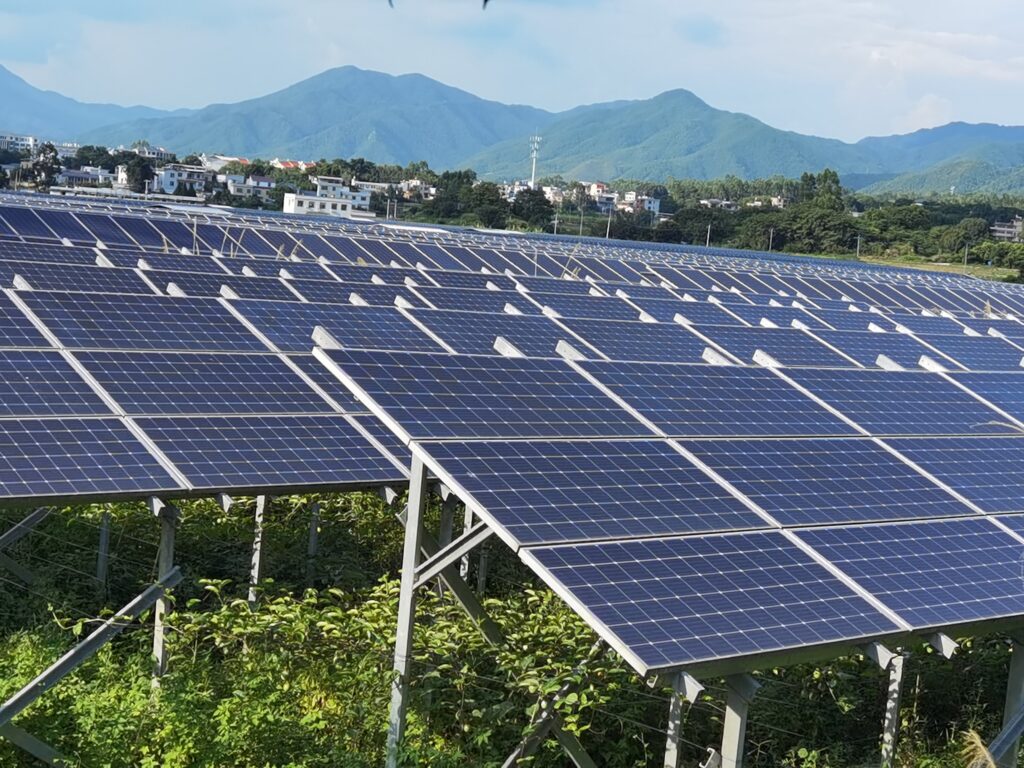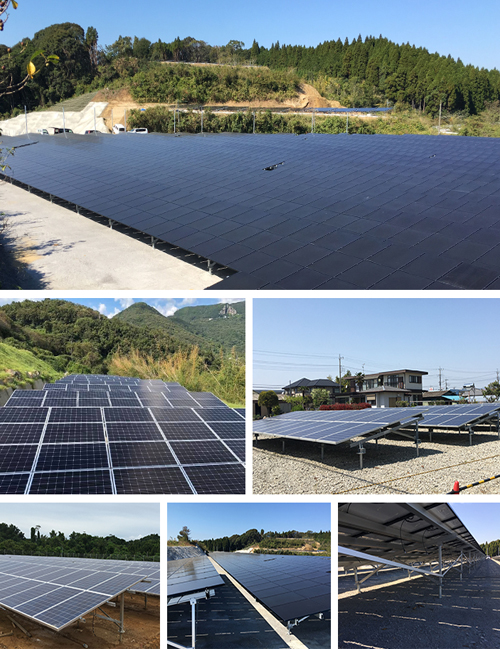What Is It and How Does It Work?
Solar energy is one of the most abundant and clean sources of renewable energy in the world.
However, many homeowners face challenges in installing solar panels on their roofs,.
such as limited space, high cost, structural issues, or aesthetic concerns.
If you are looking for an alternative way to harness the power of the sun,
you may want to consider a solar farm.

A solar farm is a large-scale photovoltaic system (PV system) that is set up to generate electricity from solar energy.
A solar farm is typically composed of thousands of solar panels, each mounted on its own support structure, which can take up
acres of land https://www.bluettipower.com/blogs/articles/what-are-solar-farms-types-of-solar-farms.
A solar farm can also be called a solar park, a solar plant, or a solar power station
https://www.repsol.com/en/energy-and-the-future/future-of-the-world/solar-farm/index.cshtml.
A solar farm works by capturing the sunlight that falls on the panels and converting it into electricity.
The electricity can then be used to power homes, businesses, or other facilities, or stored in batteries or sent back to the grid for later use.
The basic components of a solar farm are:
1• Solar panels: These are the devices that absorb the photons from the sunlight and create an electric field across the layers of silicon cells.
The electric field causes electrons to flow from one layer to another, creating a direct current (DC) electricity.
2• Inverter: This is the device that converts the DC electricity into alternating current (AC) electricity that matches the voltage and frequency of the grid.
3• Mounting system: This is the device that secures the solar panels to the ground, ensuring stability and safety.
4• Wiring and connectors: These are the devices that connect the solar panels to the inverter, and the inverter to the grid.
5• Meter: This is the device that measures the amount of electricity produced and consumed, and determines how much can be sold back to the grid or stored in batteries.
There are different types of solar farms, such as:
1• Fixed solar farms: These are solar farms that have a fixed angle and orientation of the panels, usually facing south in the northern hemisphere and north in the southern hemisphere. Fixed solar farms are cheaper and easier to install, but less efficient than tracking solar farms.
• Tracking solar farms: These are solar farms that have a tracking system that adjusts the angle and orientation of the panels according to the movement of the sun, increasing the energy output by up to 25%. Tracking solar farms are more expensive and complex to install, but more efficient than fixed solar farms.
• Community solar farms: These are solar farms that serve subscribers or members who have paid for a share of the power. Community solar farms allow people to access solar energy without installing solar panels on their own roofs. Community solar farms are typically smaller and more local than utility solar farms.
• Utility solar farms: These are solar farms that serve the utility company and all of its customers as part of the energy mix. Utility solar farms are part of the power grid and can provide electricity to large areas. Utility solar farms are typically larger and more remote than community solar farms.
Some of the benefits of solar farms are:
• Land use: Solar farms can be installed in areas that are not suitable for farming, maximizing the use of non-productive land. Solar farms can also coexist with farming, providing shade and reducing water loss for crops.
• Inexhaustible energy source: Solar energy comes from the sun, an inexhaustible energy source, ensuring a constant and sustainable electricity supply.
• Clean and renewable energy: Generating electricity from solar energy is clean and renewable, which helps preserve the environment and reduce greenhouse gas emissions.
• Local energy production: Solar farms encourage local energy production, which reduces transmission and distribution losses, increasing energy efficiency.
Some of the challenges of solar farms are:
• High initial cost: Solar farms require a large upfront investment for the purchase and installation of the solar panels and other equipment. Solar farms also need to obtain permits and approvals from the authorities, which can add to the cost and time of the project.
• Intermittent energy source: Solar energy depends on the availability of sunlight, which can vary depending on the weather, season, and time of day. Solar farms need to have backup systems or storage solutions to ensure a reliable electricity supply.
• Environmental impact: Solar farms can have some negative impacts on the environment, such as land use, habitat loss, water consumption, and glare. Solar farms need to follow environmental regulations and best practices to minimize these impacts.
Solar farms are an innovative and sustainable way to generate electricity from solar energy.
Solar farms can provide clean and renewable energy for homes, businesses, or other facilities, as well as save money and reduce
carbon footprint. Solar farms can also create jobs and economic opportunities in the solar industry.


Pingback: can you track beats solo 3 - Solar mounting system manufacturer